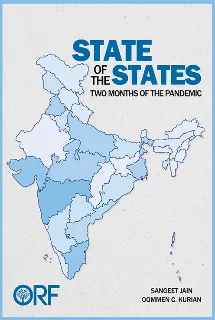The World Health Organization declared COVID-19 a global pandemic on 11 March 2020. Two months on, no country in the world has clear daily numbers on how many people are truly infected with the coronavirus or how many have died because of it.
The available numbers—particularly recorded cases—remain gross underestimates, including in India. However, India has not yet seen widespread transmission. At over 80,000 cases and around 2,700 deaths, even after accounting for the low number of tests per million people, India’s numbers remain much lower than what many experts had predicted at the beginning of the outbreak.
India is not an outlier. The world is struggling to understand why the spread and devastation of the COVID-19 virus has been less than anticipated in many large countries. Of the ten most populous countries, which make up 60 percent of the world population, only three—the US,
Brazil and Russia—have total confirmed cases per million people higher than the global average. When it comes to deaths per million people, eight out of ten most populous countries (barring the US and Brazil) have an average lower than the global average.
The pandemic is still in the early stages and, like what happened with Brazil, a surge is expected in many large countries, including India, as restrictions imposed by the lockdowns are eased. However, even when more intensive transmission of the virus may be inevitable, the current spread among the Indian population seems limited inside certain states like Maharashtra and Gujarat, where positive cases per tests conducted remain high and climbing.
Given this context, this report presents the state-level situation—tracking the broad risks that the population is faced with, the overall preparedness of the health system, the spread of the virus over the last two months in terms of morbidity and mortality, the expansion of testing and the response on several fronts by the state governments.
The severe paucity of data within India’s health sector makes a systematic analysis of issues like private sector delivery capacity and non-communicable diseases extremely difficult. This preliminary report shall attempt to side-step this limitation by focusing on government data sets, and specific age groups for whom population level estimates are available.
India has, as of now, one of the lowest population-adjusted infection rates and death rates. India was one of the earliest countries to impose a national economic lockdown. The federal system has held strong and the states, even those ruled by parties other than the one at the Centre, have largely supported and implemented the strict containment measures. This report provides a snapshot of how prepared and responsive the states have been, and how the pandemic has progressed over the first two months of the lockdown.
The main challenge for India at present is to keep deaths at a low level as the virus spreads. This means protecting high- risk populations as economic activity is restored bit by bit. It will entail ensuring that green zones are indeed green by deploying broader testing strategies, and ensuring voluntary compliance of physical distancing measures. Managing low-income urban settlements with high population densities will be a particularly difficult challenge. It will be the Observer Research Foundation’s endeavour to track these measures at the state level as India moves forward.
The views expressed above belong to the author(s). ORF research and analyses now available on Telegram! Click here to access our curated content — blogs, longforms and interviews.

 PDF Download
PDF Download



 PREV
PREV


